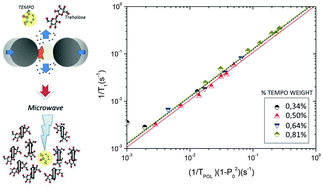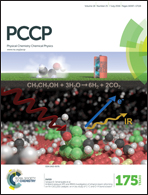Nuclear magnetic resonance studies of DNP-ready trehalose obtained by solid state mechanochemical amorphization
Abstract
1H nuclear spin–lattice relaxation and Dynamic Nuclear Polarization (DNP) have been studied in amorphous samples of trehalose sugar doped with TEMPO radicals by means of mechanical milling, in the 1.6–4.2 K temperature range. The radical concentration was varied between 0.34 and 0.81%. The highest polarization of 15% at 1.6 K, observed in the sample with concentration 0.50%, is of the same order of magnitude of that reported in standard frozen solutions with TEMPO. The temperature and concentration dependence of the spin–lattice relaxation rate 1/T1, dominated by the coupling with the electron spins, were found to follow power laws with an exponent close to 3 in all samples. The observed proportionality between 1/T1 and the polarization rate 1/Tpol, with a coefficient related to the electron polarization, is consistent with the presence of Thermal Mixing (TM) and a good contact between the nuclear and the electron spins. At high electron concentration additional relaxation channels causing a decrease in the nuclear polarization must be considered. These results provide further support for a more extensive use of amorphous DNP-ready samples, obtained by means of comilling, in dissolution DNP experiments and possibly for in vivo metabolic imaging.


 Please wait while we load your content...
Please wait while we load your content...